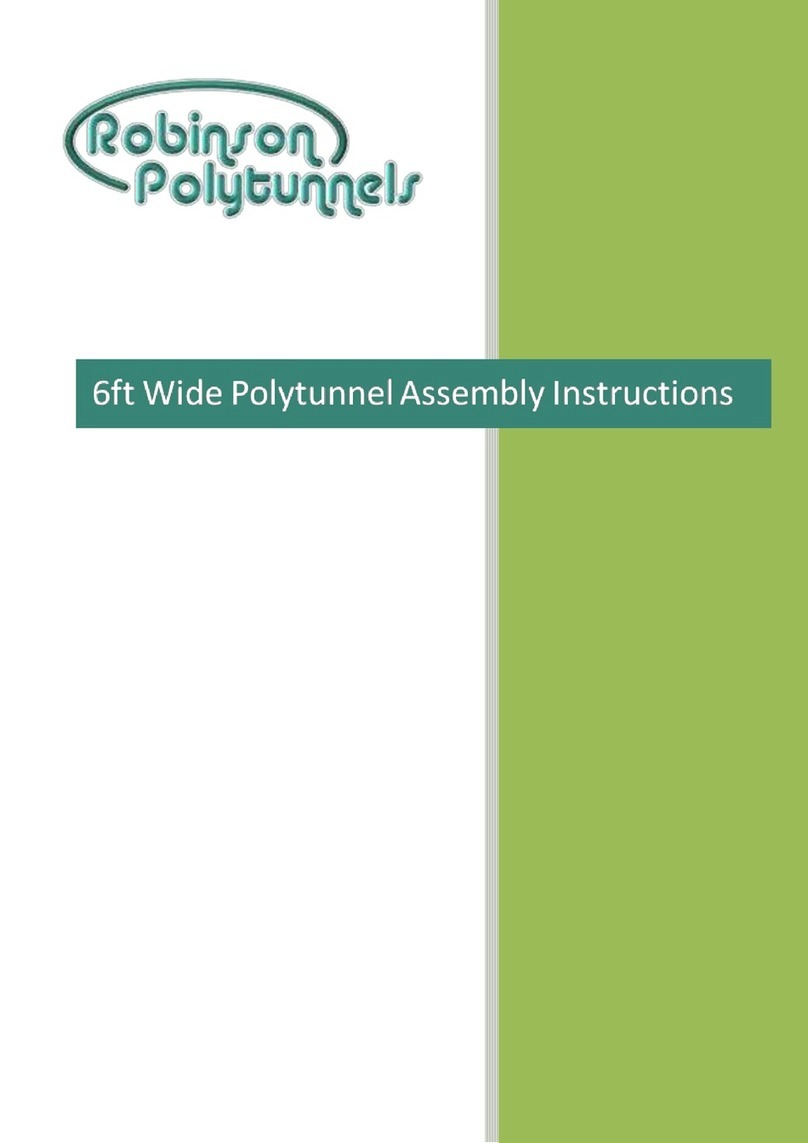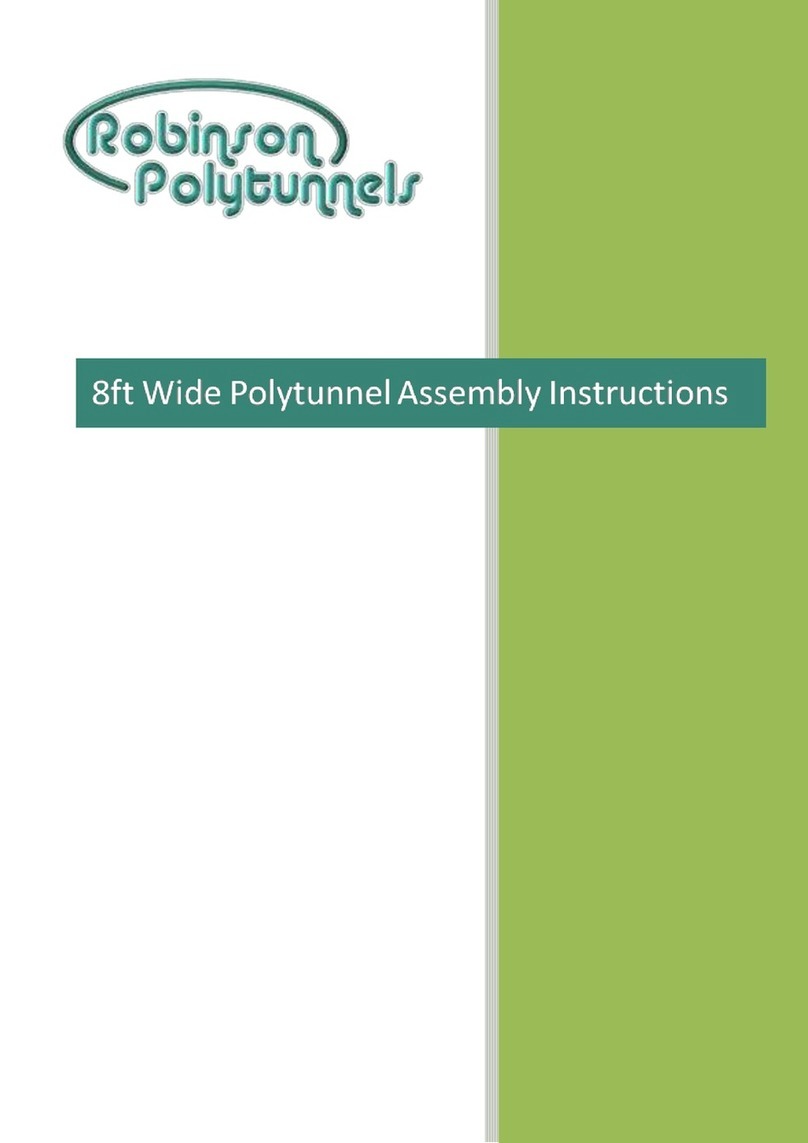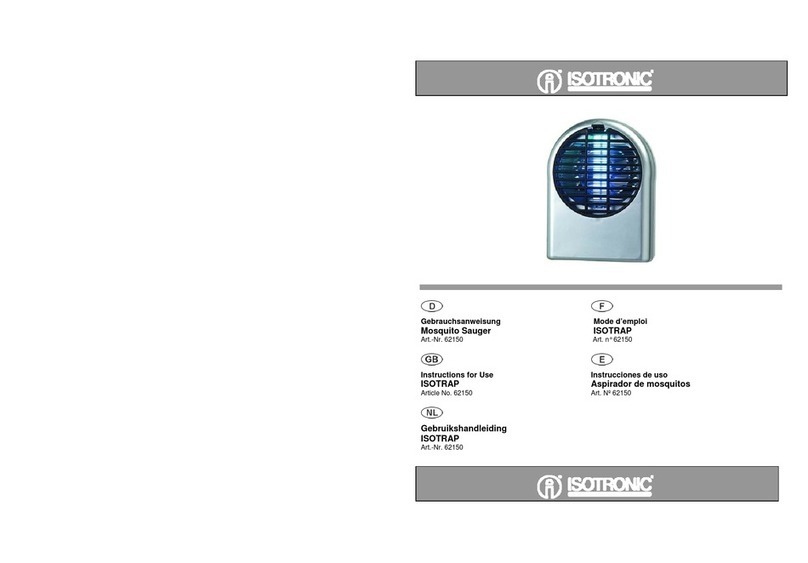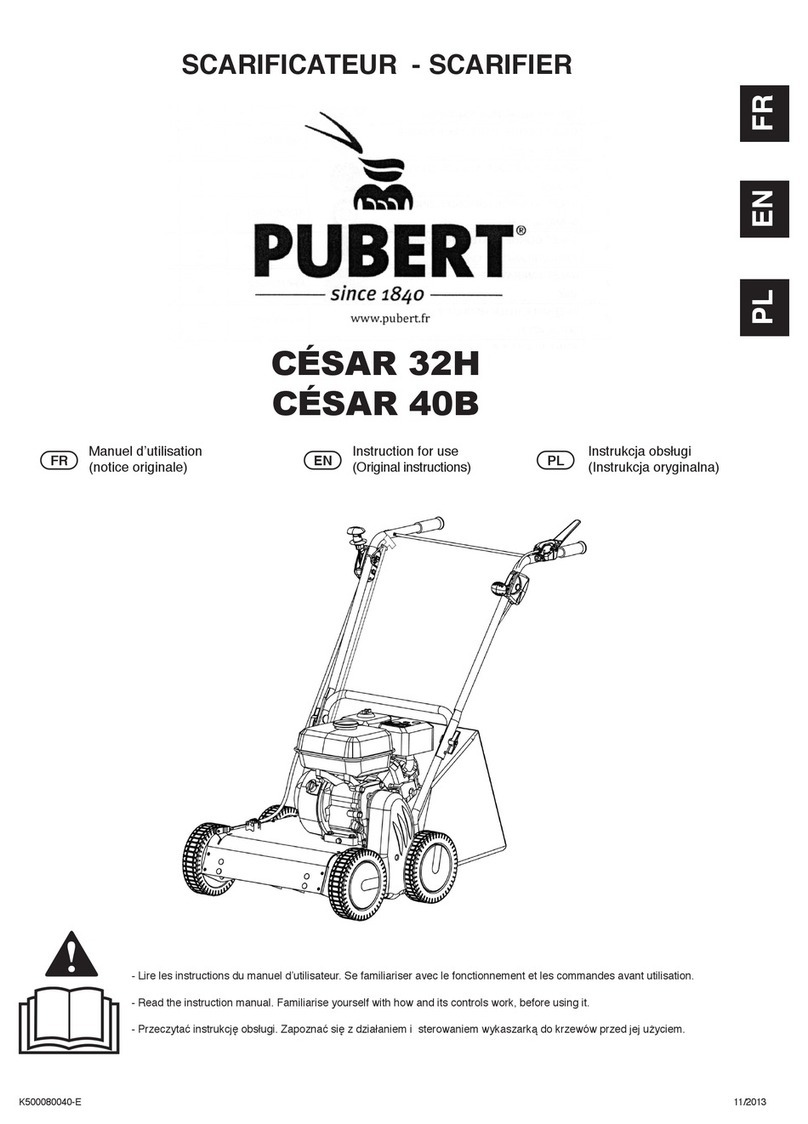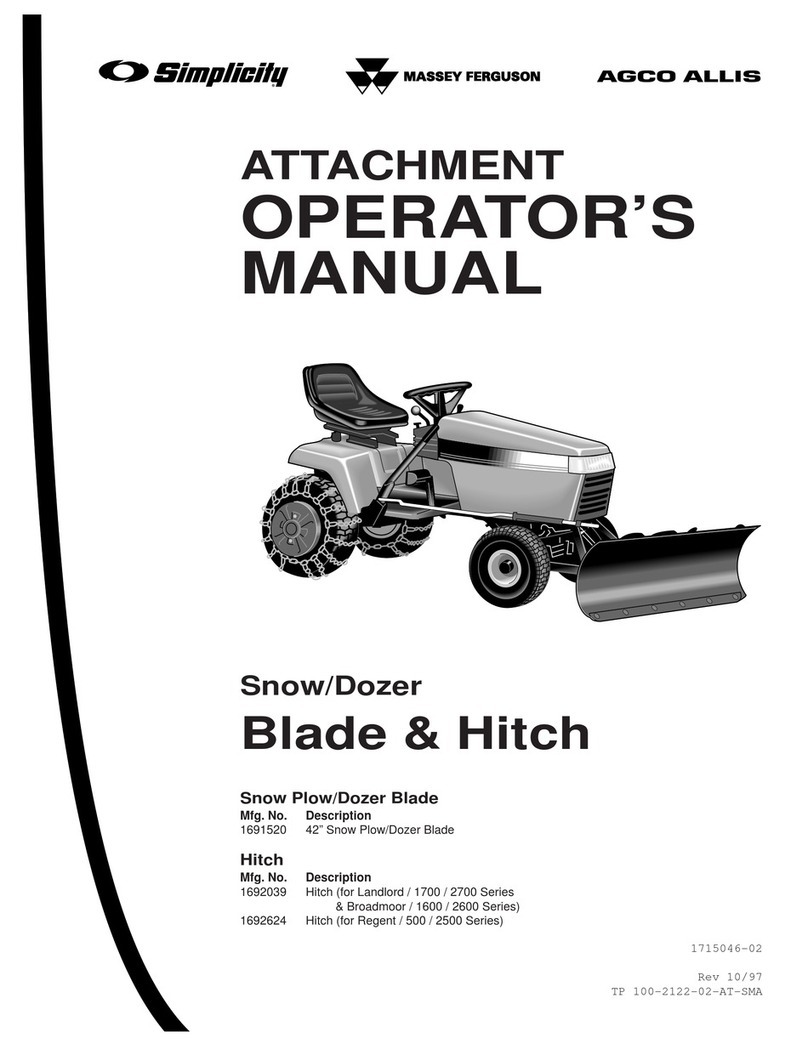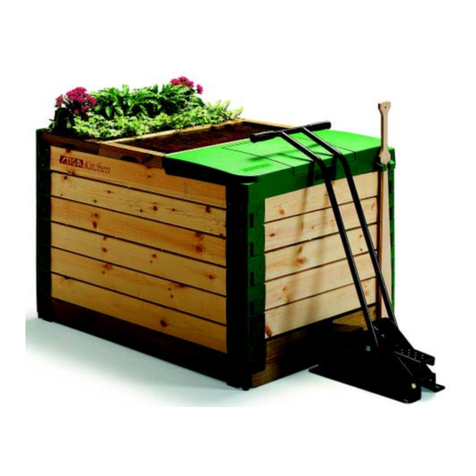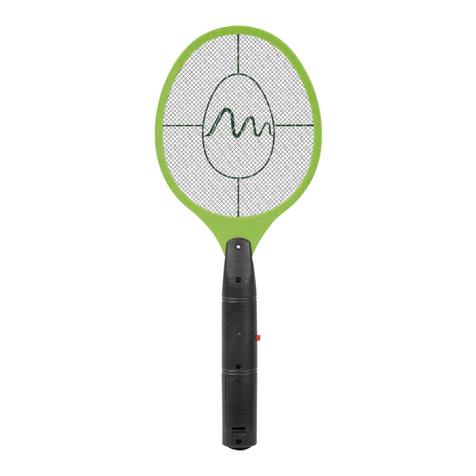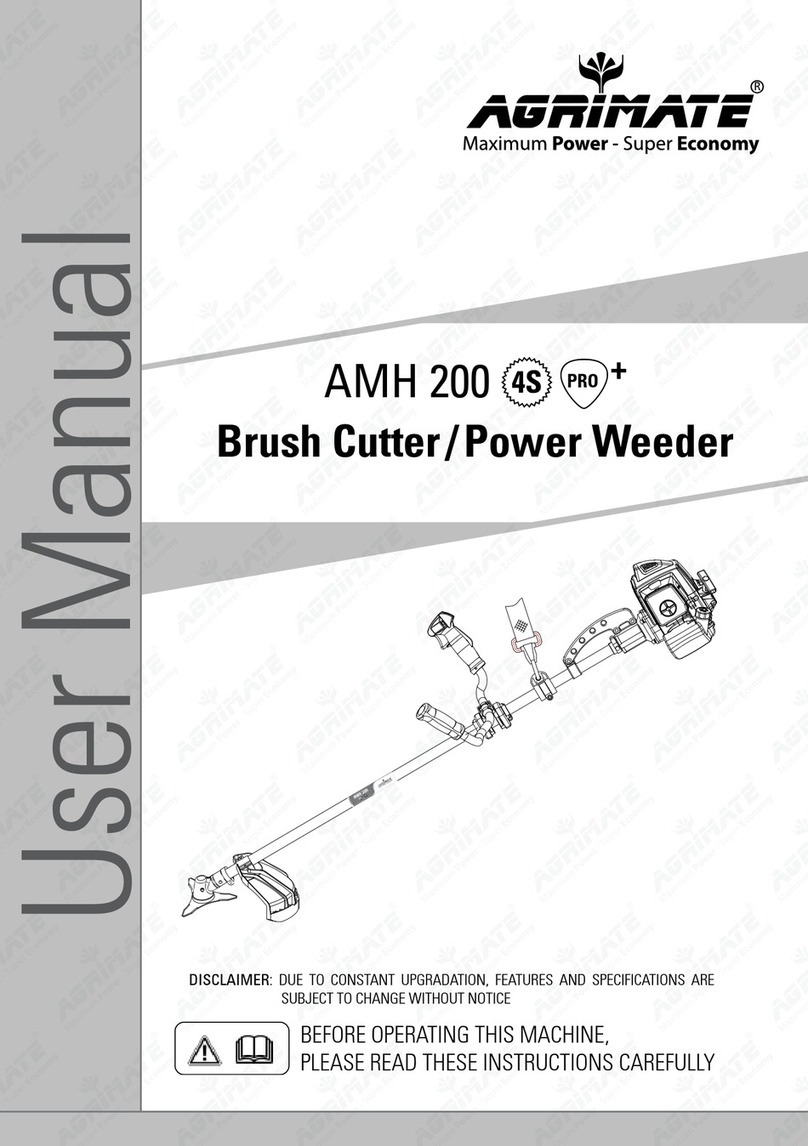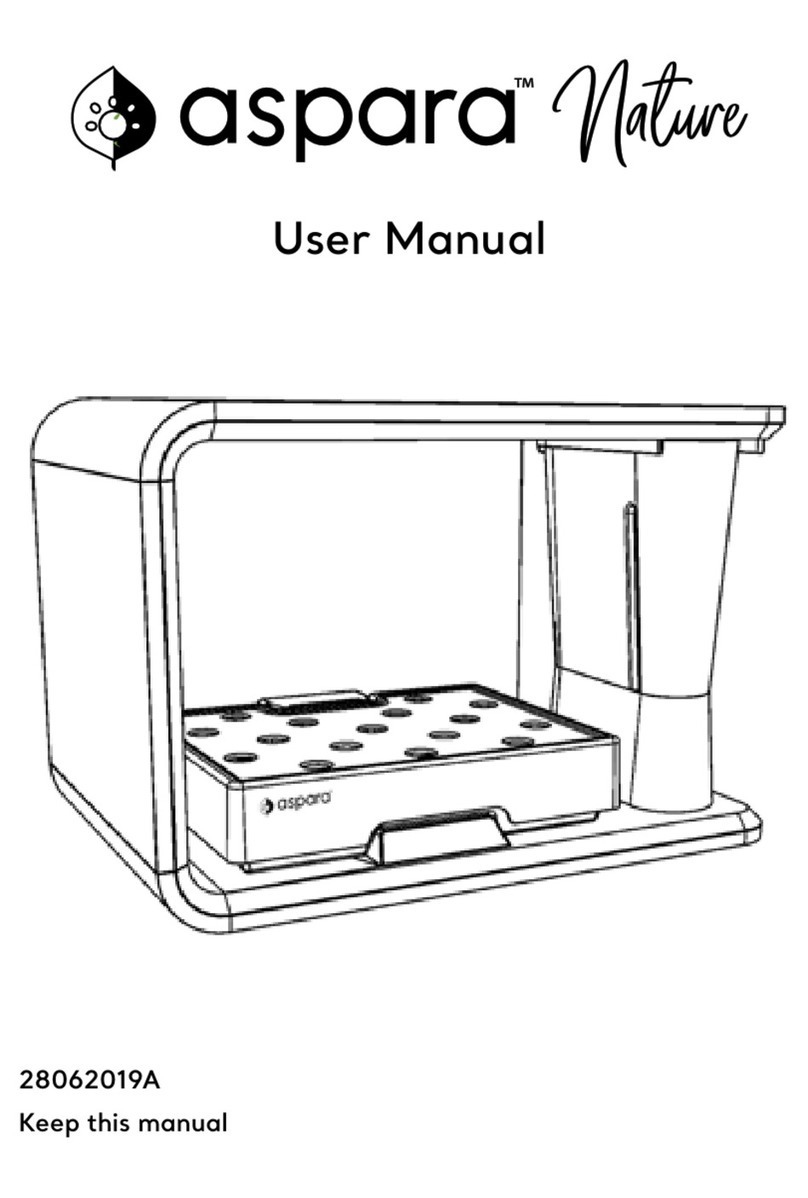Robinson Polytunnels 10ft Wide Polytunnel Installation guide


10ft Wide Polytunnel Assembly Instructions
Copyright © Robinson Polytunnels 2009 - 2018 2
CONTENTS
Section Page
1. FOUNDATION TUBES: Option A –Hammered-In Foundation Tubes 3
2. FOUNDATION TUBES: Option B –Ground Anchor Plates 4
3. FOUNDATION TUBES: Option C –Concreted Foundation Tubes 5
4. STEEL FRAME ASSEMBLY & INSTALLATION 6
5. TIMBER END FRAME ASSEMBLY & INSTALLATION 8
6. TIMBER BASE RAIL (OPTION) 9
7. TIMBER SIDE RAIL (OPTION) 11
8. ROLL UP CURTAIN (OPTION) 13
9. END PANELS & SIDE NETTING (INCLUDED WITH TIMBER SIDE RAIL OPTION) 15
10. FITTING THE ANTI HOT SPOT TAPE 16
11. FITTING THE POLYTHENE –TRENCHING METHOD 17
12. FITTING THE POLYTHENE –POLYTHENE TO BASE RAIL 19
13. FITTING THE POLYTHENE –POLYTHENE TO SIDE RAIL 21
14. DOOR ASSEMBLY & INSTALLATION 23
PARTS LIST 25
POLYTUNNEL MAINTENANCE 28

10ft Wide Polytunnel Assembly Instructions
Copyright © Robinson Polytunnels 2009 - 2018 3
Work Safely
When you tackle a job it is important to work safely. Please consider the following points when building your
Polytunnel.
Keep your work area tidy. A tidy site is a safe site.
Use the correct tools for the job.
Wear gloves where practical. Components may have sharp edges. Timber may have splinters.
Take care when using tools such as hammer, spade, drill, knife, scissors.
Consider other people, particularly children.
Tools Required
You will require a few tools to assemble your Polytunnel which are usually available in most households.
Hammer
Wood saw
Spirit level
Cordless drill
9mm drill bit
String line (optional)
Staple gun (optional) or stapler
13mm spanners or sockets
Tape measure
Scissors or craft knife
1. FOUNDATION TUBES: Option A –Hammered-In Foundation Tubes (Suitable for trenched polythene only)
1Set two string lines to the width of the polytunnel
(10ft apart). Ensure they are parallel.
Tip! It’s best to put your polytunnel on a flat, level site.
A fall lengthways is easy to accommodate. A fall
sideways should be limited to about 6” over the
width of the polytunnel.
2Set another string line for the end of the polytunnel.
Ensure the “end” string line is perpendicular to the
“length” string lines.
3Hammer the first two corner Foundation Tubes into the ground.
These will be positioned just outside the “length” string lines and just
touching the “end” string line. Ensure the Foundation Tubes are
vertical.
Tip! Use a piece of wood on top of the Foundation Tube
to ensure that the tube does not become
“mushroomed”.
4Hammer in the remaining Foundation Tubes at 5ft centres until the full length is reached.

10ft Wide Polytunnel Assembly Instructions
Copyright © Robinson Polytunnels 2009 - 2018 4
2. FOUNDATION TUBES: Option B –Ground Anchor Plates
1Set two string lines to the width of the polytunnel.
Ensure they are parallel.
Tip! It’s best to put your polytunnel on a flat, level site.
A fall lengthways is easy to accommodate. A fall
sideways should be limited to about 10cm over the
width of the polytunnel.
2Set another string line for the end of the polytunnel.
Ensure the “end” string line is perpendicular to the
“length” string lines.
3Mark the ground at each foundation position, to the outside
of the “length” string lines at 5ft centres until the full length is
reached.
4Temporarily remove the string lines so they don’t get in the
way whilst digging.
5Dig a hole for each Foundation Tube, approximately 25cm
square x 35cm deep.
6Slot the ground anchor plates onto the bottom end of the
Foundation Tubes. And lock in place with the Starlock
Washers. Starlock Washers are inserted using the short piece
of tube.
a. With the foundation tube upside-down, slot the 6mm
Concrete Tie Bar (steel rod) into the pre-punched hole
in the Foundation Tube.
b. Slot the Ground Anchor Plate onto the bottom end of
the Foundation Tube, to rest on the Concrete Tie Bar.
c. Hold the short piece of tube over the starlock washer on the bottom end of the Foundation Tube
and tap the short tube with a hammer until the washer is located on the Foundation Tube, right
up to the Ground Anchor Plate.
7Reinstate the string lines.
8Insert the Foundation Tube and anchor plate assembly into the excavated holes, to the outside of the
string line. Make sure the Foundation Tubes are vertical, touching the string line and spaced at 5ft
centres. The Foundation Tubes should be protruding above ground by approximately 40cm.
9Backfill the excavated holes, checking that the Foundation Tubes are still in the correct position. Stamp
on the soil to ensure the soil is well-compacted.

10ft Wide Polytunnel Assembly Instructions
Copyright © Robinson Polytunnels 2009 - 2018 5
3. FOUNDATION TUBES: Option C –Concreted Foundation Tubes –Recommended Method (Suitable for
base rail or trenched polythene)
1Set two string lines to the width of the polytunnel
(10ft apart). Ensure they are parallel.
Tip! It’s best to put your polytunnel on a flat, level site.
A fall lengthways is easy to accommodate. A fall
sideways should be limited to about 6” over the
width of the polytunnel.
2Set another string line for the end of the polytunnel.
Ensure the “end” string line is perpendicular to the
“length” string lines.
3Mark the ground at each foundation position, to the outside of the “length” string lines at 5ft centres
until the full length is reached.
4Temporarily remove the string lines so they don’t get in the way whilst digging.
5Dig a hole for each Foundation Tube, approximately 25cm square x 35cm deep.
6Reinstate the string lines.
7Fill the excavated holes with freshly-mixed concrete.
8Put a steel rod through the hole in the foundation tube. Slot the Foundation Tubes into the concrete, to
the outside of the string lines. Make sure the Foundation Tubes are vertical, touching the string line and
spaced at 5ft centres. The Foundation Tubes should be protruding above ground by approximately 40cm.
Tip! Allow the concrete to set before you try to install
the framework!

10ft Wide Polytunnel Assembly Instructions
Copyright © Robinson Polytunnels 2009 - 2018 6
4. STEEL FRAME ASSEMBLY & INSTALLATION
Tip! If you have ordered Timber Base Rails, fitting them
along the sides now makes setting the framework
easier.
1Assemble the hoops. Lay the components out on a flat surface with the fittings in the positions shown.
Notice that the bolt heads are facing inwards so as not to protrude into the polythene.
Tip! If you have ordered crop/tie bars, it’s easier to put
the KH25 fittings onto the inner hoops now.
2Fix the hoop leg to the middle part-hoop with the self-drill screws, using a cordless drill.
3(OPTION) If you have ordered the Side Rail Option:
a. Slide an M25 fitting onto the leg of each end hoop.
b. Slide an H25 fitting onto the leg of each inner hoop.
Set the M25 fitting and the H25 fittings at approximately 90cm from the bottom of the hoop.
4Slot a KH20 fitting over the second Foundation
Tube from each end of the polytunnel. This is
to hold the bottom end of the corner diagonal.
5(OPTION) If you have ordered the Base Rail
Option, slide an M20 fitting over each corner
Foundation Tube.
6Put an A20 fitting onto each foundation tube.
On the corner foundation tubes, set the A20
fitting to about 18cm above ground level. On
the inner foundation tubes, set the A20
fittings about 5cm lower.
7Slot the assembled hoops onto the Foundation Tubes. Make sure the end hoops are positioned so that
the bolt heads are inside the polytunnel.

10ft Wide Polytunnel Assembly Instructions
Copyright © Robinson Polytunnels 2009 - 2018 7
8Make sure the end hoops are set
approximately 5cm higher than the inner
hoops. (The inner hoops will be raised later
to tension the polythene.) The end hoops
should be approximately 18cm above
ground level. Lock in place with the A20
fittings.
9Slot the ridge tube into the E25 fittings,
starting with the plain-ended ridge tube. Set
the end of the ridge tube flush with the E25
fitting and tighten the bolt to secure in
place.
10 Slot a swaged ridge tube into the end of the
previous ridge tube until you reach the end of the polytunnel. Tighten the bolts in the E25 fittings to
secure the ridge tubes in place.
11 Insert a plastic plug into each end of the ridge tube.
12 Fit the four corner diagonals. Fix to the KH20 fitting on the Foundation Tube first using an M8 x 30 bolt &
nylock nut. Then fix to the KH25 fitting on the end hoop.
Tip! Put the bolts through from the outside so
that the thread of the bolt doesn’t
protrude into the polythene.
13 Set the end hoops so that they are vertical (looking from the side)
by adjusting the position of the KH25 fittings.

10ft Wide Polytunnel Assembly Instructions
Copyright © Robinson Polytunnels 2009 - 2018 8
5. TIMBER END FRAME ASSEMBLY & INSTALLATION
1For each Timber End Frame you will need:
a. 3 pieces of timber at 89mm x 38mm x
2400mm long
b. 2 Corner Joint Plates
c. 1 batten 38mm x 19mm x 1800mm long
d. 18 twist nails 30mm long
e. 2 nails 125mm long
2Lay the timber end frames out on a flat surface in the
arrangement shown.
Tip! It’s easier to make the frame of the door first
and then build the End Frame around it.
3Use the 30mm twist nails to fix the corner joint plates (9 nails each) and then nail through the lintel into
the top of the door post with the 125mm nails.
Tip! Pre-drill the lintel with a 5mm hole for the
125mm long nails.
4Nail a temporary batten across the door posts at 183cm below the lintel. This will rest on the ground
when you are installing the Timber End Frame and set the lintel to the correct height.
5Dig two holes for the door posts at each end
of the polytunnel, approximately 55cm
deep.
6Slot the door posts into the excavated holes
and set the end frame vertical in both
directions.
7Position the D25 fittings on the end hoop to
accept the lintel. Mark the lintel for mitring
if necessary and drilling to bolt to the D25
fittings.
8Fix the Timber End Frame to the D25 fittings
with M8 x 50 coach bolts and nuts. Note, the
Timber End Frame is located on the inside face of
the tabs on the D25 fittings.
9Back-fill the excavated holes and remove the
temporary battens.
10 If you are trenching the polythene, create a
rebate around the Timber End Frame for fixing the
polythene. Use battens 38mm x 19mm x 900mm
long and 50mm long nails, 7 nails per batten.
View from
outside

10ft Wide Polytunnel Assembly Instructions
Copyright © Robinson Polytunnels 2009 - 2018 9
6. TIMBER BASE RAIL (OPTION)
1Set the M20 fittings on the corner Foundation Tubes so that the holes in the
plate are about 5cm above ground level.
2Start at one end of the polytunnel, at the door post. Place the end of the
timber 75mm x 38mm x 240cm long up to the side of the door post. Mark the
timber to the outside face of the M20 fitting and cut to length.
3Re-position the piece of timber and mark through the
hole on the M20 fitting and drill the timber to accept an
8mm diameter bolt.
Tip! Use the timber offcuts wherever they are long
enough.
4Bolt the timber to the M20 fitting with an
M8 x 50 coach bolt and nut.
5Using a flat nail plate, fix the timber to the
door post with 30mm long twist nails. Nail
through the door post into the end of the
timber with a 125mm long nail.
6Lay the next timber along the side of the
polytunnel, flush with the outside of the timber
base rail on the end of the polytunnel. Mark
through the hole in the M20 fitting and drill to
accept an M8 bolt.
7Bolt the timber to the M20 fitting with an M8 x
50 coach bolt and nut.
8On the next Foundation Tube, position an SC20 fitting over the
Foundation Tube and mark through the two holes. Drill to accept
an M8 bolt and fix in place with two M8 x 65 coach bolts and nuts.
9Continue until you reach the end of the polytunnel and trim the last
timber to length.

10ft Wide Polytunnel Assembly Instructions
Copyright © Robinson Polytunnels 2009 - 2018 10
10 Where the timber rails join end-to-end, connect together with a timber
joint plate and 30mm twist nails.
11 Check that the timber base rail is straight and adjust the SC20 fittings if necessary.
12 If you are fixing the main cover to the base rail, create a rebate around the Timber End Frame and along
the base rail for fixing the polythene. Use battens 38mm x 19mm x 900mm long and 50mm long nails at
approximately 15cm apart.

10ft Wide Polytunnel Assembly Instructions
Copyright © Robinson Polytunnels 2009 - 2018 11
7. TIMBER SIDE RAIL (OPTION)
1Set the M25 fittings and H25 fittings 90cm above the
M20/SC20 fittings on the Foundation Tubes.
2Start at one end of the polytunnel, at the door post. Place
the end of the timber 75mm x 38mm x 240cm long up to
the side of the door post. Mark the timber to the outside
face of the M25 fitting and cut to length.
3Re-position the piece of timber and mark through the
hole on the M25 fitting and drill the timber to accept an
8mm diameter bolt.
Tip! Use the timber offcuts wherever they are long
enough.
4Bolt the timber to the M25 fitting with an M8 x 50
coach bolt and nut.
5Using a flat nail plate, fix the timber to the door
post with 30mm long twist nails. Make sure the
timber is parallel to the base rail. Nail through the
door post into the end of the timber with a
125mm long nail.
6Hold the next timber along the side of the polytunnel, flush
with the outside of the timber side rail on the end of the
polytunnel. Mark through the hole in the M25 fitting and drill
to accept an M8 bolt.
7Bolt the timber to the M25 fitting with an M8 x 50 coach bolt
and nut.
8On the next hoop, mark the timber through the two holes in the H25
fitting. Drill to accept an M8 bolt and fix in place with two M8 x 50
coach bolts and nuts.
9Continue until you reach the end of the polytunnel and trim the last
timber to length.

10ft Wide Polytunnel Assembly Instructions
Copyright © Robinson Polytunnels 2009 - 2018 12
10 Where the timber rails join end-to-end, connect together with a timber
joint plate and 30mm twist nails.
11 For each corner, cut a piece of timber to fit
between the base rail and the side rail.
12 Fix this vertical timber between the base rail and
the side rail with a timber joint plate at each end
using 30mm twist nails.
Tip! Pre-nail the timber joint plates onto the vertical
timber before you put it in place. Everything is
much more rigid whilst you are nailing.

10ft Wide Polytunnel Assembly Instructions
Copyright © Robinson Polytunnels 2009 - 2018 13
8. ROLL UP CURTAIN (OPTION)
1Cut the 2m wide roll of polythene down the centre (to 1m wide).
2Join the lengths of curtain tube together starting with
the plain-ended piece. Fix the tubes together with a
self-drill screw. Cut the last piece to length so that the
overall length of the tube is 30cm shorter than the gap
between the vertical corner timbers.
Tip! The curtain operates better if the gearbox is
positioned at the “low” end of the ‘tunnel.
3Slot the drive tube end into the curtain tube at
the end where you want to operate the
gearbox. Fix together with a self-drill screw,
65-70mm from the swage shoulder (to avoid
drilling into the square shaft).
4Slot a black PVC plug into the other end of the drive tube.
5Roll out the 1m wide polythene along the side of the polytunnel and lay
the drive tube on top, close to one edge.
6With the PVC clips, clip the polythene to the drive tube at approximately
every 30cm, keeping the polythene as straight as possible.
7Rest the drive tube on top of the base rail with
approximately 2cm gap between the end of the
drive tube and the vertical corner timber. Staple
the top edge of the polythene to the side rail,
flush with the top edge. At each end of the drive
tube, trim of the surplus polythene.

10ft Wide Polytunnel Assembly Instructions
Copyright © Robinson Polytunnels 2009 - 2018 14
8Take up the slack in the polythene by rolling the drive tube into the
polythene. Slot the gearbox assembly onto the square shaft and slide
the guide tube into tube on the gearbox bracket.
9Hold the guide tube onto the inside faces of the base rail and side rail
and fix it to the base rail with an M8 x 50 coach screw.
10 With the gearbox handle, wind the
curtain up to the side rail. Fix the top
end of the guide tube to the side rail
with an M8 x 50 coach screw. Fit a
PVC plug into the top end of the
guide tube.
11 Check that the curtain rolls up parallel to the base rail and side rail and adjust the PVC clips if necessary.
12 Cut a notch out of the base rail where the gearbox touches to allow the
drive tube to rest directly on top of the base rail.

10ft Wide Polytunnel Assembly Instructions
Copyright © Robinson Polytunnels 2009 - 2018 15
9. END PANELS & SIDE NETTING (INCLUDED WITH TIMBER SIDE RAIL OPTION)
1Cut a piece of polythene to fit over the panel at the side of the doorway and around the side of the
polytunnel by approximately 40cm (approximately 1m x 2m).
2Staple the polythene over the end frame, around the side of
the polytunnel to overlap the curtain.
3Unroll the net along the side of the polytunnel.
4Staple the net to the side rail, flush with the
top edge. Staple the net to the two vertical
corner rails and to the base rail.
5Batten over the net and end panels in the positions shown.

10ft Wide Polytunnel Assembly Instructions
Copyright © Robinson Polytunnels 2009 - 2018 16
10. FITTING THE ANTI HOT SPOT TAPE
1The Anti Hot Spot Tape is applied to the hoops of the polytunnel where
the polythene would touch.
2Starting just above the A20 fitting on the Foundation Tube, place the
Anti Hot Spot Tape on the outside face of the hoop. On the inner hoops
the tape should be central on the tube. On the end hoops the tape
should be on the “corner” of the tube.
Tip! Don’t fit the Anti Hot Spot Tape until you’re
ready to sheet –it may get damaged if the
weather is wet and windy.
3Tape over any sharp edges, bolt heads and metal faces that the polythene may come into contact with.

10ft Wide Polytunnel Assembly Instructions
Copyright © Robinson Polytunnels 2009 - 2018 17
11. FITTING THE POLYTHENE –TRENCHING METHOD
1Dig a trench around the perimeter of the
polytunnel, approximately 15cm away from the
Foundation Tubes. The trench should be
approximately 30cm wide x 30cm deep.
Tip! Wait for a calm and preferably warm day to
sheet your polytunnel. It will be much easier
and you’ll probably do a better job!
2Unroll and unfold the polythene and drape it over the
polytunnel framework with an equal amount over each side
and each end.
3Carefully slice the polythene diagonally from the top corners
of the doorway. Trim the bottom off the central flap so that it
hangs approximately 30cm below the door lintel.
1Use a full batten to fit in the rebate above the doorway.
2Place the batten underneath the flap of polythene and
roll the batten into the polythene, up to the rebate. Nail
the batten in place. Note, it is preferable to have a
couple of small pleats in the flap of polythene.
3Repeat at the other end, PULLING THE POLYTHENE AS
TIGHT AS POSSIBLE.

10ft Wide Polytunnel Assembly Instructions
Copyright © Robinson Polytunnels 2009 - 2018 18
4Start back-filling the trench along the sides of the polytunnel,
working from the centre towards each end. Try to get the
polythene tight by pulling on the surplus polythene as you fill
the trench. Continue right up to the door posts, pulling the
polythene towards to doorway.
5Now fix the polythene to the door posts. The polythene
is pulled into the doorway and pleated. Trap the
polythene behind the batten as you nail the batten into
the rebate. Use 50mm long nails at about 10cm apart.
Tip! Pre-nail the battens so they’re ready to fix
the polythene quickly.
Tip! Fold the pleats downwards so that they don’t
collect rainwater.
6Trim off the surplus polythene in the doorway.
Tip! To avoid the back-filled trench becoming
water-logged, prick the polythene at the
bottom of the trench with a garden fork.
7Raise the inner hoops to tension the polythene.

10ft Wide Polytunnel Assembly Instructions
Copyright © Robinson Polytunnels 2009 - 2018 19
12. FITTING THE POLYTHENE –POLYTHENE TO BASE RAIL
1Unroll and unfold the polythene and drape it over the polytunnel framework with an equal amount over
each side and each end.
2Carefully slice the polythene diagonally from the top corners
of the doorway. Trim the bottom off the central flap so that it
hangs approximately 30cm below the door lintel.
4Use a full batten to fit in the rebate above the doorway.
3Place the batten underneath the flap of
polythene and roll the batten into the
polythene, up to the rebate. Nail the batten in
place. Note, it is preferable to have a couple of
small pleats in the flap of polythene.
4Repeat at the other end, PULLING THE
POLYTHENE AS TIGHT AS POSSIBLE.
5Starting at the centre of one side, batten the
polythene to the base rail. Hold the batten
under the edge of the polythene and carefully
cut the polythene in line with the ends of the
batten to create a flap, up to the bottom edge
of the base rail.
6Roll the batten into the polythene up to the
rebate and nail the batten to the base rail with
50mm long nails at approximately 15cm apart.
7Do the same at the opposite side of the polytunnel but try to tension the polythene by levering the edge
of the batten against the rebate.
8Continue towards each end of the polytunnel, alternating between each side.

10ft Wide Polytunnel Assembly Instructions
Copyright © Robinson Polytunnels 2009 - 2018 20
9Continue around the corners, pulling the polythene towards to doorway.
10 Now fix the polythene to the door posts. The polythene
is pulled into the doorway and pleated. Trap the
polythene behind the batten as you nail the batten into
the rebate. Use 50mm long nails at about 10cm apart.
Tip! Fold the pleats “downwards” so that they
don’t collect rainwater.
Tip! Pre-nail the battens so they’re ready to fix
the polythene quickly.
11 Trim off the surplus polythene in the doorway.
12 Raise the inner hoops to tension the polythene.
Table of contents
Other Robinson Polytunnels Lawn And Garden Equipment manuals
Popular Lawn And Garden Equipment manuals by other brands
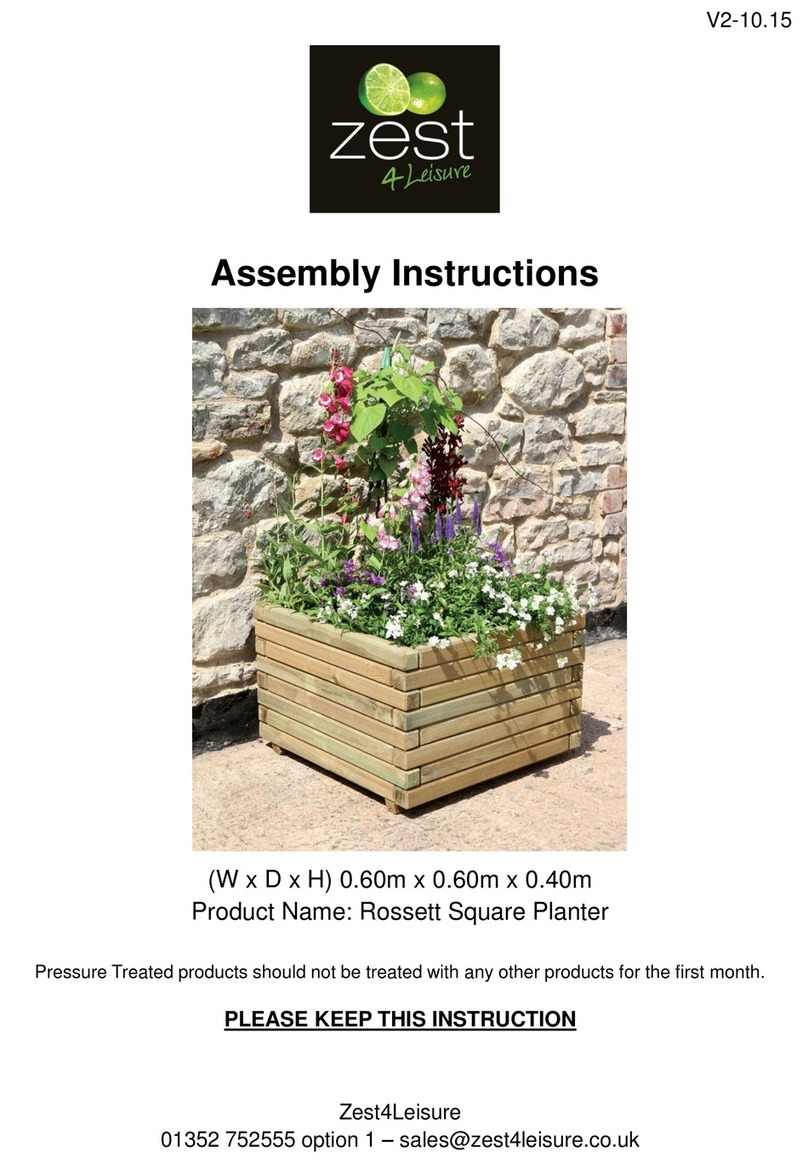
Zest 4 Leisure
Zest 4 Leisure Rossett Square Planter Assembly instructions

Gardeners
Gardeners CedarLast 8596680 quick start guide
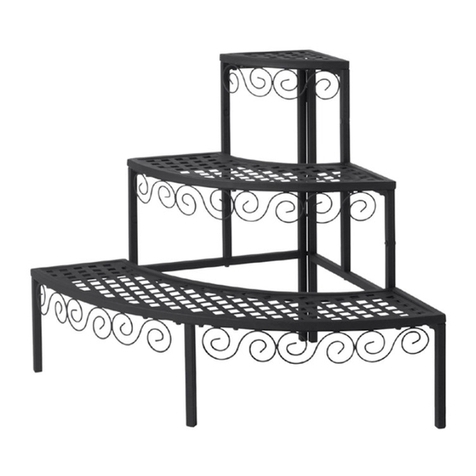
FLORABEST
FLORABEST 272449 Assembly instructions
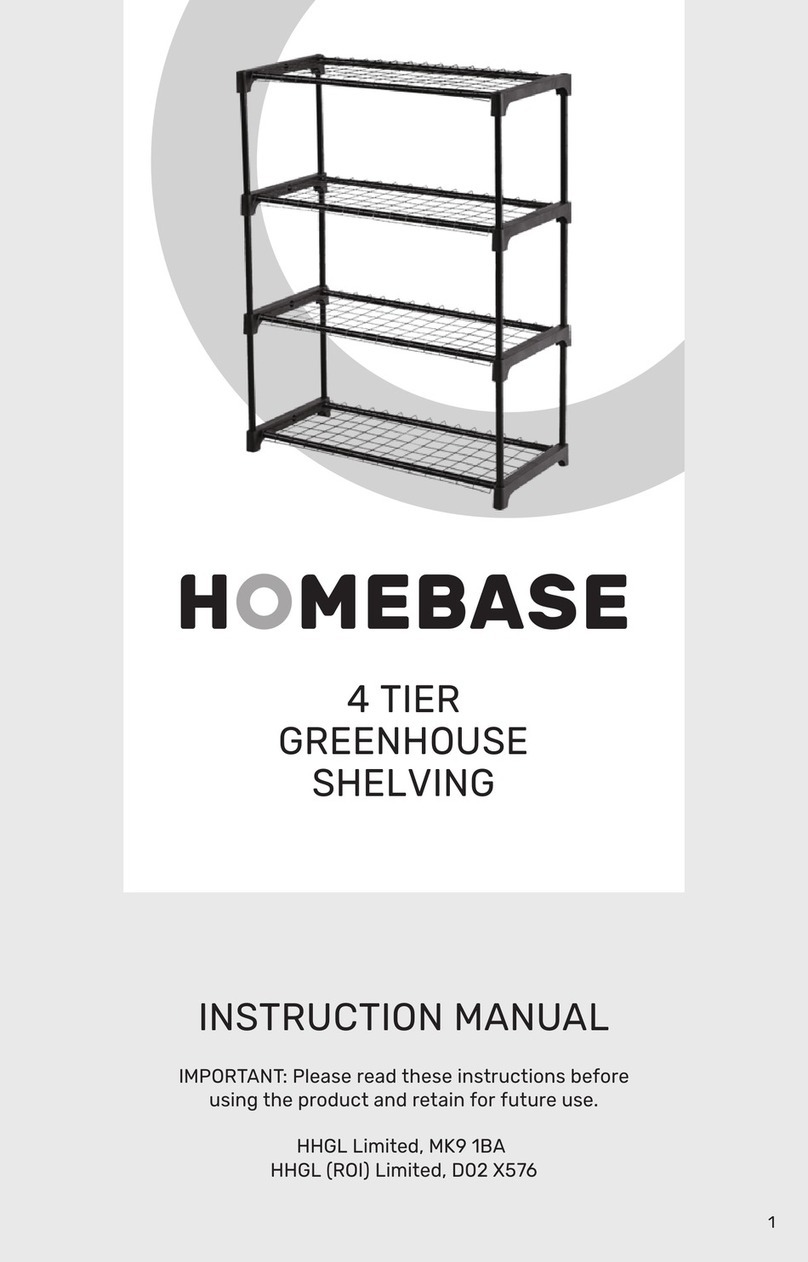
Homebase
Homebase 578550 instruction manual

Earth Way
Earth Way Ev-N-Spred 2750 Series Assembly and operating instructions

sunjoe
sunjoe TJ599E Operator's manual
